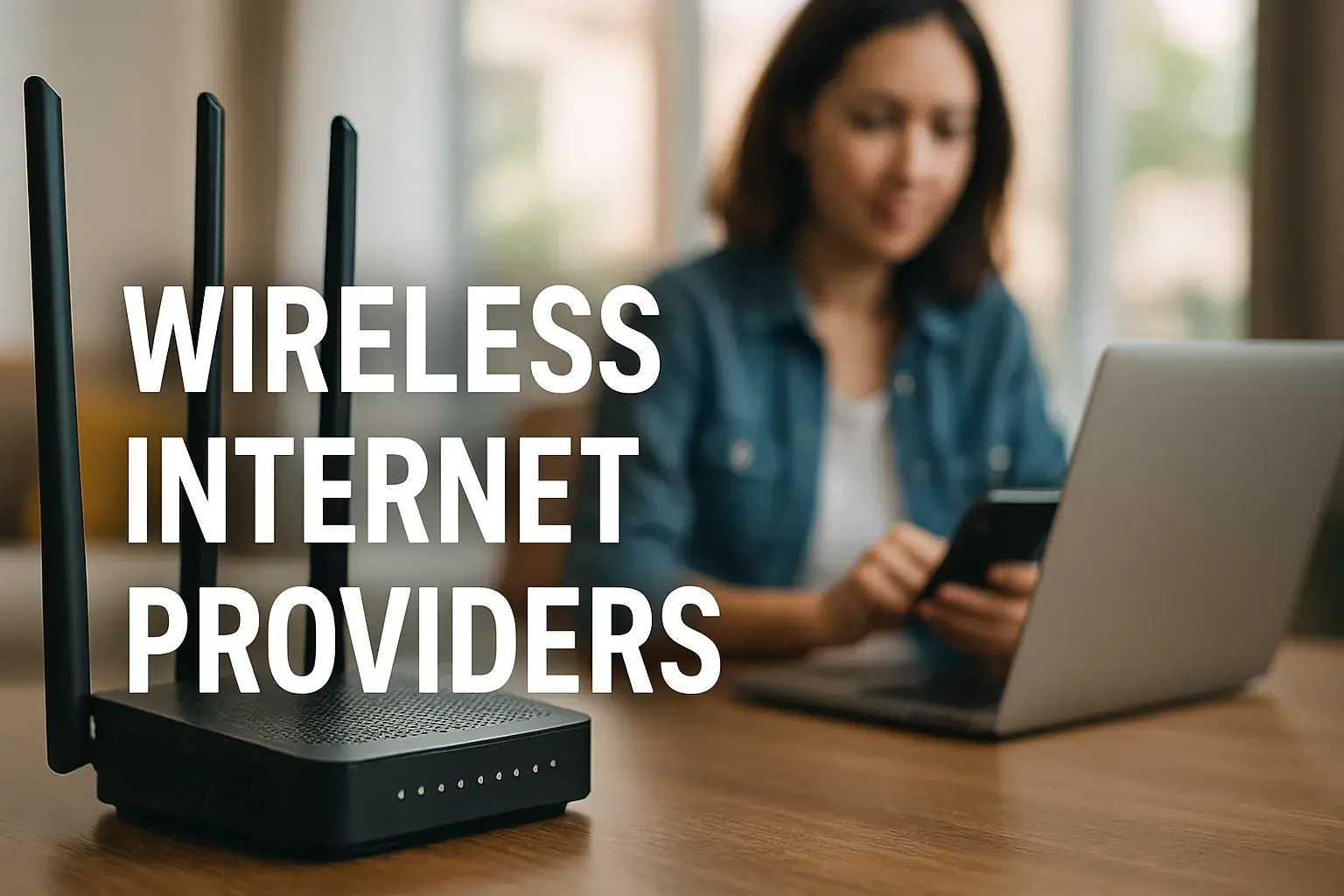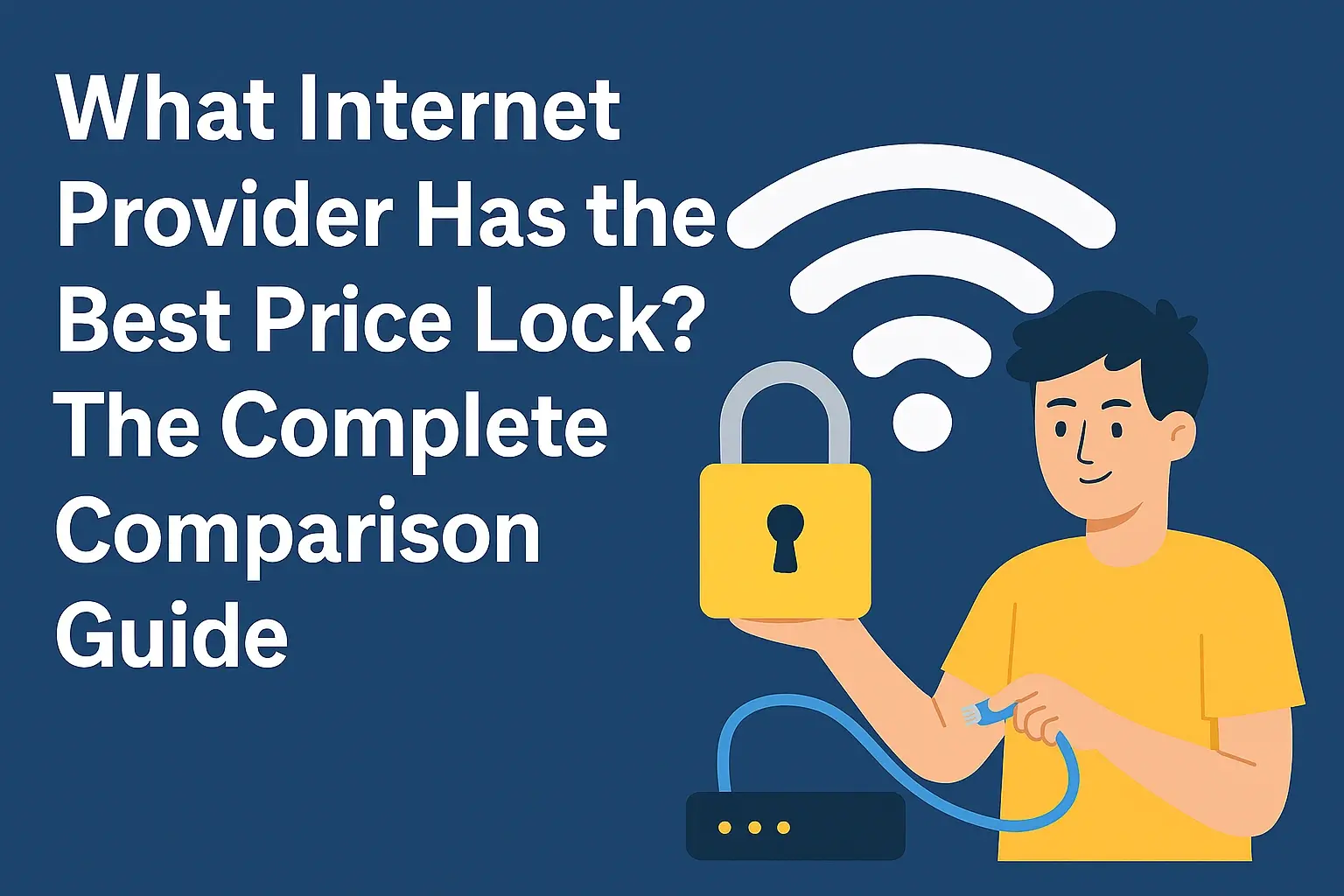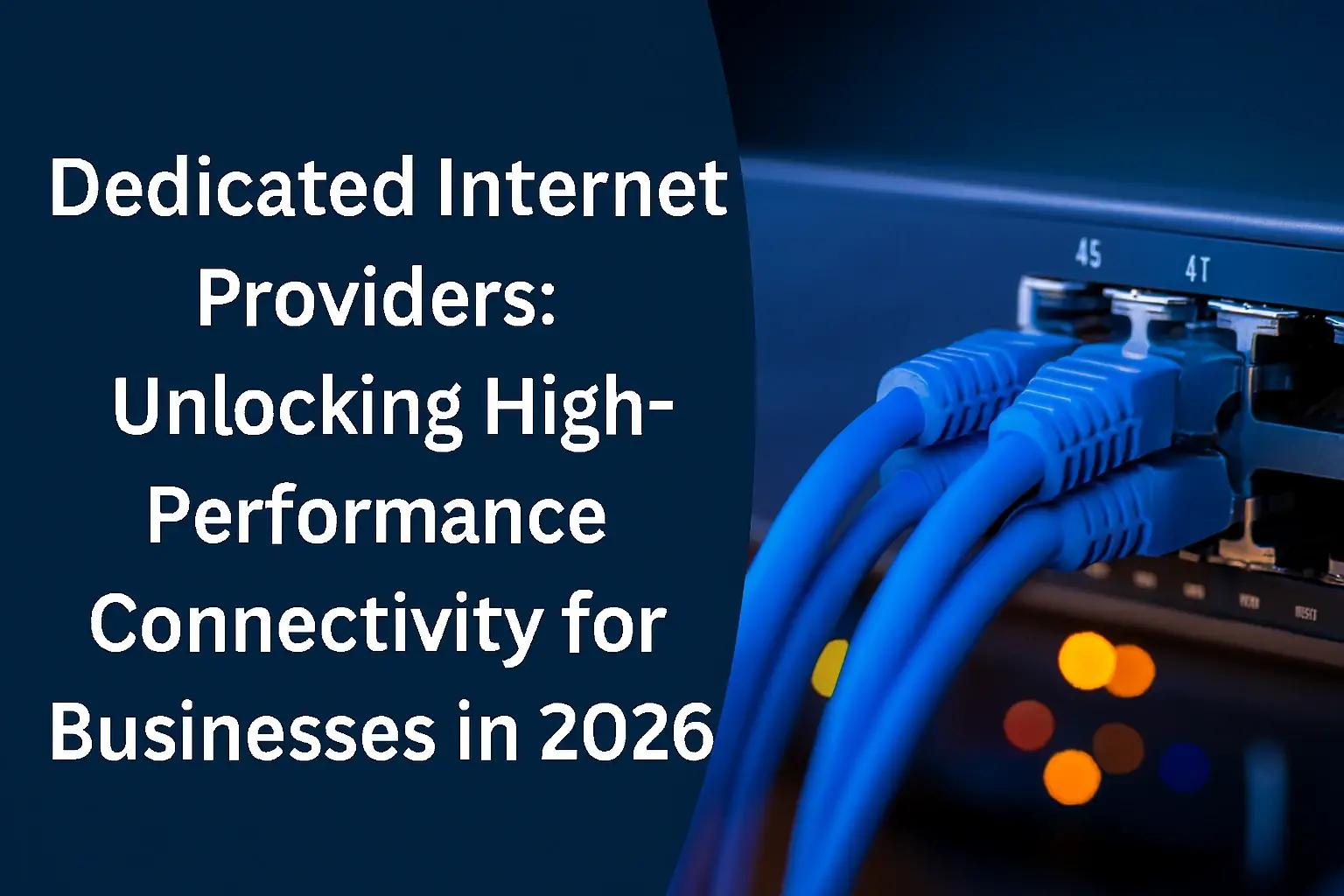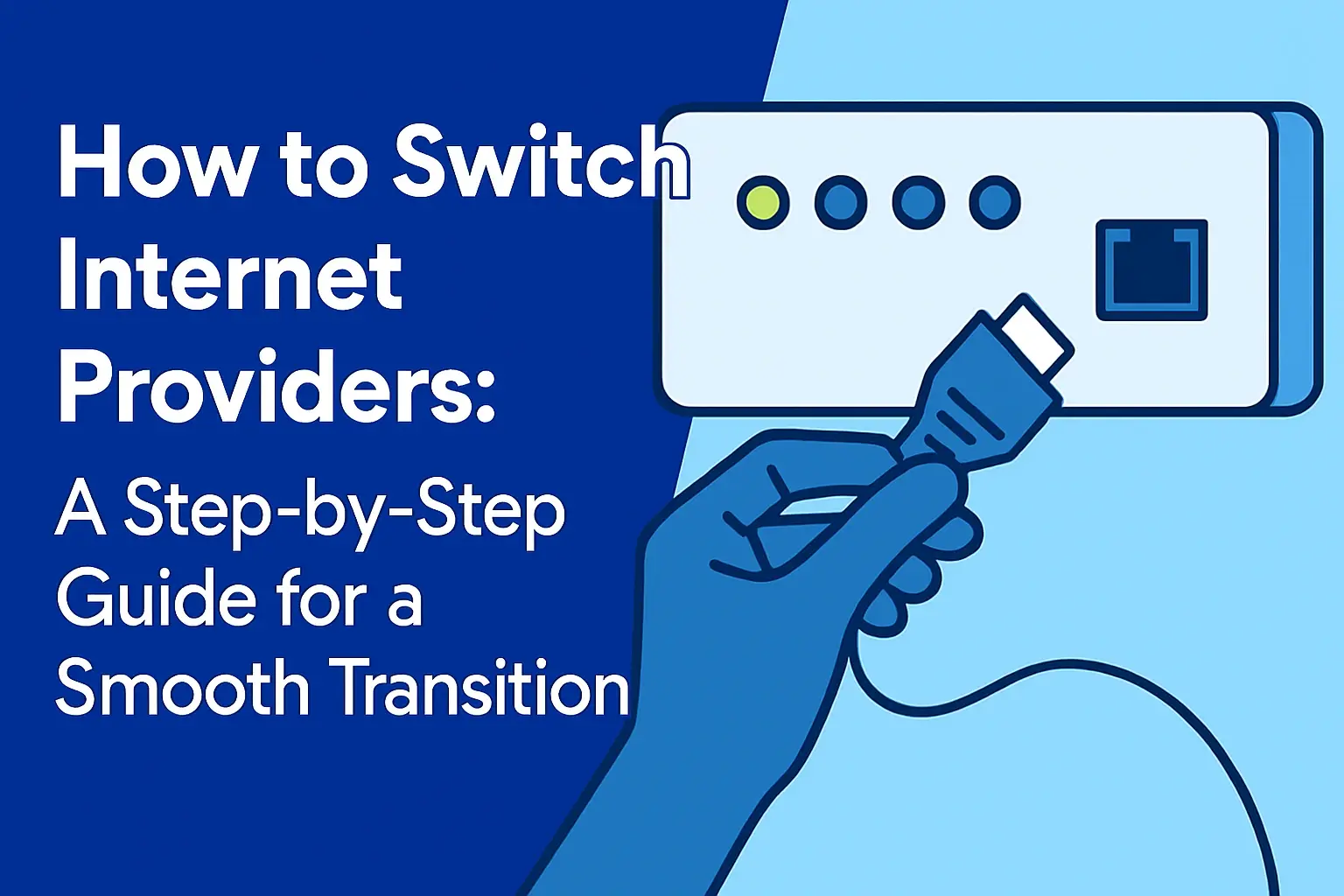
In today’s world, having a quick and steady internet connection is very important, especially during peak usage times. Fiber internet has changed the way we deal with home internet, giving us faster speed and better reliability. Whether you use the internet just for fun or need a strong connection for work or entertainment, it is important to know the costs that come with fiber internet.
The Fundamentals of Fiber Optic Internet
Fiber optic internet sends data using light pulses through thin and flexible glass fibers. This is very different from the copper wires that cable internet uses. This key difference in how data is sent is why fiber can offer much faster internet speeds. You will often see these speeds measured in megabits per second (Mbps) or gigabits per second (Gbps). The higher the Mbps or Gbps, the quicker your internet will be.
As fiber internet becomes the best option for home internet, it's important to know its main parts and how it is better than other internet types.
What Makes Fiber Optic Internet Unique?
Several important features set fiber optic internet apart from other types of internet:
-
Unmatched Speed: Fiber optic cables send light signals. This allows them to transfer data much faster than traditional copper wires. You can get very high download and upload speeds, sometimes reaching up to 10 Gbps or even more.
-
Symmetrical Upload/Download Speeds: In contrast to cable internet, where upload speeds are usually slower than download speeds, fiber gives you similar speeds for both. This means you can upload large files, join video calls, or stream videos without delays or interruptions.
-
Greater Bandwidth: Fiber optic cables have a higher bandwidth capacity. This means they can send more data at the same time without slowing down. This feature is especially useful for homes with many users and devices online at once.
The Evolution of Fiber Internet in the United States
The growth of fiber internet in the United States has been steady. At first, fiber optic internet was mainly found in big cities. It had little reach to suburban and rural areas. But now, both private fiber providers and the federal government see the need for faster and better internet. They are working hard to expand fiber internet coverage.
The Federal Communications Commission (FCC) has been very important in supporting fiber growth. They do this through different programs and funding efforts. More fiber internet means more choices for people. This makes the market more competitive. As a result, consumers enjoy faster speeds and better pricing options.
Initial Costs Associated with Fiber Optic Internet
While fast internet is very attractive, it’s important to know the beginning costs before you decide to switch. The first costs for fiber optic internet usually include two main parts: installation fees and the price of required equipment. These initial costs can change a lot based on the provider and the details of the installation. So, it’s important to include them in your budget.
Let’s look at these costs more closely for a better understanding:
Installation Fees and Equipment Costs
Installation Fees:
-
Professional Installation: Fiber optic internet usually needs experts to install it. Technicians connect your home to the fiber optic network. This means running optic cables from the utility pole to your house. You might have to pay a one-time fee for this. Some providers offer free or cheaper installation, especially for new clients.
-
Self-Installation: Sometimes, providers have self-installation kits. These let you connect your home to the fiber network by yourself. This option saves you the installation fee, but you need some technical skills. It may only be available in certain areas.
Equipment Costs:
-
Optical Network Terminal (ONT): The ONT is an important device. It changes the light signals from the fiber optic network into electrical signals for your devices. Providers may let you rent the ONT for a monthly fee or ask you to buy it during the installation.
-
Router: A router is important for making a Wi-Fi network at home and connecting different devices to the internet. Some fiber internet providers include a router in their monthly bill, while others want you to buy or rent one separately.
Understanding the Pricing Models of Providers
Fiber internet providers use different pricing models. Each model has its own benefits and drawbacks. Knowing these models can help you decide when looking at different providers.
-
Flat-Rate Pricing: This common model gives a fixed monthly rate for unlimited data use. This clear pricing helps with budgeting. You won’t worry about going over data limits. It's a great choice for heavy users.
-
Tiered Pricing: Some providers have tiered pricing based on speed levels. This lets you pick a plan that fits your speed needs and your budget.
-
Promotional Pricing: Providers often have special deals to attract new customers. These can include lower rates for a short time, free installation, or service bundles. These offers can cut your costs. Be sure to ask about any current promotions.
Monthly Expenses for Fiber Optic Internet Users
After you pay for the first setup and equipment, the main cost you will have each month is your internet bill. The monthly price of fiber optic internet can change a lot. This depends on the provider, the plan you pick, and any extra services you choose.
Let's look at what affects the pricing and compare different plans. This will help you know what to expect.
Comparing Packages and Pricing Across Leading Providers
When choosing a fiber optic internet plan, it's essential to compare offerings from various internet service providers (ISPs). This table provides a general overview of pricing across some prominent providers:
How Speed and Bandwidth Affect Monthly Costs
The speed and bandwidth you pick is important for deciding how much you will pay for internet each month. Higher speeds, called gig speeds (Gbps), usually cost more. If you use the internet a lot for things like streaming 4K video, online gaming, or downloading large files, a gig speed plan might be what you need.
If you use the internet less, like just browsing, checking email, or occasional streaming, a slower plan could save you more money. It’s important to find a good balance between the speed you need and what you can afford. Some internet providers have data caps. This means they limit how much data you can use each month. If you go over this limit, you might have to pay extra. Unlimited data plans are becoming more common, which is great for heavy internet users because they offer more freedom and less worry.
Hidden Costs and Potential Savings
When you budget for your fiber optic internet service, keep an eye out for hidden costs. These costs can unexpectedly raise your monthly bill. Even if the advertised price looks good, extra fees can add up fast.
By being careful with these hidden costs, you can get a better idea of the total amount you will pay. Here are some common extra fees to watch for:
Additional Fees You Might Encounter
-
Equipment Rental Fees: Some providers include the cost of important equipment like the ONT or router in their monthly bill. Others charge separate fees for renting this equipment. These fees can be a few dollars to more than $10 each month for each device.
-
Taxes and Regulatory Fees: Fiber optic internet, like many services, has taxes and regulatory fees set by state and local governments. These charges can differ greatly based on where you live.
-
State Cost Recovery Fees: In some states, providers may add a monthly state cost recovery charge to your bill. This fee helps cover costs linked to following state rules and improving broadband access.
-
Installation Appointment Changes or Cancellations: If you change or cancel your installation appointment after you schedule it, you might have to pay extra fees.
Tips for Reducing Your Fiber Internet Bill
Savvy consumers can often find ways to lower their monthly fiber internet bill without losing speed or quality. Here are some useful tips to help you manage your internet costs:
-
Negotiate With Your Provider: Don't hesitate to ask your provider for a better rate. This is especially true if you have been a customer for a long time or if you have other offers.
-
Inquire About Discounts: Providers often have discounts for bundling services such as internet, TV, and phone. There may also be discounts for students, seniors, military people, or workers from certain organizations.
-
Consider Autopay and Paperless Billing: Signing up for autopay and paperless billing can sometimes give you small monthly discounts. It also makes paying your bill easier.
-
Explore Price Guarantees: Some providers have price guarantees for a limited time. This means your monthly rate stays the same for a certain period.
The Long-Term Value of Investing in Fiber Internet
Fiber optic internet may look like a big expense at first. However, it's important to think about its long-term benefits. It offers great speed and trustworthiness. There are also many reasons why it's worth the money you spend.
Analyzing the Return on Investment (ROI)
Analyzing the return on investment (ROI) for fiber internet means looking at the long-term benefits compared to the initial costs. You need to think about factors like faster upload speeds, reliability, and unlimited data. It’s helpful to compare fiber providers like Google Fiber and Verizon Fios to see which one offers the best value. Also, pay attention to equipment fees, price guarantees, and potential price hikes. Don't forget to consider customer satisfaction and the benefits of faster speeds for large file transfers or video calls. In short, consider all these factors to make a smart choice.
Fiber Internet's Impact on Property Value
In today's tech-focused world, a home with a fast and dependable internet connection, like fiber optic internet, is very appealing. Speedy internet has become an important factor for homebuyers. This is especially true for families with kids who need the internet for schoolwork. It is also important for professionals working from home and people who enjoy streaming services or online gaming.
Having fiber optic internet can make your home more attractive to buyers. This could increase its value in the real estate market. As smart homes are becoming more common, having strong internet support can boost the charm and usefulness of your home.
Choosing the Right Fiber Optic Internet Plan
Finding the right fiber optic internet plan can be confusing. However, knowing what you need, how you use the internet, and your budget can make it easier.
Here are some tips to help you choose a fiber optic internet plan that fits your needs:
Factors to Consider Before Making a Decision
-
Internet Usage: Look at how your household uses the internet. Count the number of devices that connect at the same time. Note what online activities you do and how much data you usually use. This check will help you decide the speed and data you need for your home.
-
Speed Requirements: Think about the speed you need for your online activities. If you often stream 4K or 8K videos, play competitive games, or work with large files, choose plans that offer fast speeds. If you only use the internet casually, a plan with slower speeds may be better for you.
-
Availability in Your Area: Fiber optic internet is not available everywhere. Ask providers if fiber access is in your area and if there are any limits in your neighborhood.
How to Compare Different Fiber Internet Plans Effectively
Comparing different fiber internet plans involves looking closely at these key points:
-
Download and Upload Speeds: Check for plans with similar download and upload speeds. This helps create a smoother internet experience. If you upload large files often or have video calls, pick plans with higher upload speeds.
-
Data Caps and Allowances: See if the plans have data caps. These caps limit how much data you can use each month. For heavy internet users, an unlimited data plan is the best choice. It provides peace of mind and stops surprise charges.
-
Contract Terms and Early Termination Fees: Look at the contract terms and conditions for each plan. Pay attention to the contract length and any fees if you decide to leave before the contract is over.
-
Customer Service and Reviews: Check the provider’s reputation for customer service. Read reviews from current customers to understand how satisfied they are and how good the service is.
The Future of Fiber Optic Internet Costs
Predicting future prices in any industry can be tough. However, some factors can help us see possible trends in fiber optic internet costs.
Even though we cannot be perfectly accurate, we can look into what might happen based on:
Trends and Predictions in Pricing
As more people want faster and more reliable internet, fiber optic internet is likely to stay a leader in the telecom world. We may see more companies offering fiber internet as they grow their networks and compete for users.
This competition could bring down prices, and even stop the rise in costs. However, things like inflation, building costs, and government rules can also affect prices.
Innovations That Could Lower Costs in the Future
Advances in fiber optic technology and network systems can lower costs in the future. New technologies, such as quantum fiber, aim to boost data transmission and cut expenses. This could change the optic internet landscape for the better.
Also, as fiber networks grow larger and more common, the savings for providers could lead to cheaper plans for users.
Conclusion
Fiber optic internet offers great speed and reliability. It is a smart choice for both home and business users. It is important to understand the upfront costs and ongoing expenses of fiber internet. Comparing different packages helps you see long-term benefits and possible savings. This way, you can improve your fiber internet experience while keeping costs low. Keep an eye on pricing trends and new updates that might affect future costs. This will help you get the best value from your fiber optic internet plan. Switch to fiber internet today for a smooth online experience that meets your long-term needs.






